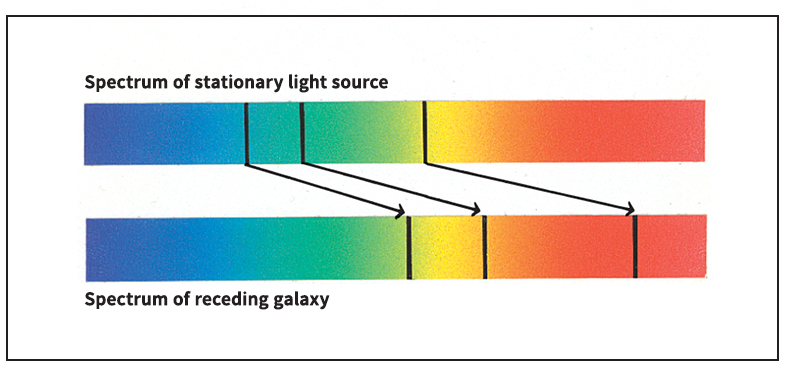Spitzer Space Telescope was an orbiting observatory that was launched in August 2003. It began making observations in December of that year. Spitzer detected infrared (heat) rays, which gave it the ability to study objects that other kinds of telescopes cannot observe. The observatory was originally called the Space Infrared Telescope Facility. Officials at the National Aeronautics and Space Administration (NASA) later renamed it in honor of the American astronomer Lyman Spitzer, Jr. Spitzer had proposed launching a large telescope into space to avoid the blurring caused by Earth’s atmosphere.
Spitzer was the first telescope to produce an image of a brown dwarf. Often called “failed stars” by astronomers, brown dwarfs are many times larger than the largest planets, but not quite large enough to become a star. Spitzer also discovered a new ring around the planet Saturn. The ring is many times larger and far dimmer than the previously known rings.
Objects the Spitzer Space Telescope studied included huge masses of matter in the process of becoming stars and planets. Also included were disks of cold material around other stars. Such disks may resemble the belt of asteroids and the Kuiper Belt of comets that orbit the sun.
Clouds of dust and gas hide many star-forming regions from optical telescopes, which detect visible light. But the clouds do not block infrared rays.
Loading the player...Spitzer Space Telescope
Optical telescopes cannot detect the disks around other stars because the disk material emits (sends out) little visible light. But the material emits much infrared radiation—even though the material has a low temperature.
Infrared rays are similar to waves of visible light. However, their wavelengths are longer than those of visible light. Wavelength is the distance between successive wave crests. Infrared astronomers generally measure wavelengths in microns. One micron equals one micrometer, or one millionth of a meter. The wavelengths of infrared radiation range from 0.7 to 1,000 microns. The Spitzer Space Telescope was designed to detect radiation whose wavelengths range from 3 to 180 microns. After depleting its coolant, the telescope could no longer detect wavelengths longer than about 5 microns.
Observing distant galaxies.
The Spitzer Space Telescope also studied the most distant galaxies known. These galaxies were accessible to the observatory’s instruments because their emissions are greatly redshifted. Redshift is a stretching of the wavelengths of electromagnetic radiation emitted by an object. Electromagnetic radiation consists of waves of electric and magnetic energy.

Infrared rays and visible light are two of six forms of electromagnetic radiation. From the shortest wavelength to the longest, the six forms are gamma rays, X rays, ultraviolet rays, visible light, infrared rays, and radio waves. Arranged in order of wavelength, the forms make up the electromagnetic spectrum. Each form also has its own spectrum. For example, at one end of the visible spectrum is violet light, which has the shortest wavelengths. At the other end is red light, with the longest wavelengths.
A type of redshift known as the cosmological redshift occurs in the radiation emitted by cosmic objects because the universe is expanding. The rate at which an object and an observer recede (become farther away) from each other due to this expansion depends on the distance between them. The greater this distance, the greater the rate of recession—and therefore the greater the redshift. Galaxies that the Spitzer Space Telescope was designed to study are so far from Earth that their ultraviolet and visible radiation has shifted into the infrared part of the electromagnetic spectrum.
Scientific equipment.
The observatory’s telescope had a diameter of less than 1 yard or 1 meter. Other orbiting infrared observatories have had larger telescopes. But those observatories have been much less sensitive to infrared radiation than the Spitzer observatory was. The observatory was highly sensitive for two reasons: (1) its light sensors were extremely efficient, and (2) its scientific instruments and its telescope were cooled to an extremely low temperature.
The sensors were similar to the charge-coupled devices (CCD’s) used in electronic cameras sold to consumers. But the Spitzer observatory’s sensors had a special requirement: They and the observatory’s telescope had to be cooled to extremely low temperatures. Otherwise, the sensors would detect their own infrared emissions and those of the telescope. A liquid helium system cooled the sensors and telescope to about –450 °F (–270 °C).
Loading the player...55 Cancri e exoplanet
The observatory’s telescope focused radiation on a spectrometer and two cameras. A spectrometer is used to break up radiation according to its wavelength, spread it out into its spectrum, and measure its intensity in all parts of the spectrum. The composition and temperature of a cosmic object and the material surrounding it largely determine the nature of the spectrum. So, by studying the spectrum, an astronomer can learn much about the object and its environment.
Unique orbit.
To limit the amount of infrared radiation from Earth to reach the Spitzer Space Telescope, NASA maneuvered the observatory into a unique orbit. Instead of orbiting Earth, the observatory followed Earth around the sun. The distance from Earth to the observatory increased by about 9.3 million miles (15 million kilometers) per year.
The Spitzer Space Telescope was the fourth and last of the “Great Observatories” launched by NASA. The other three were the Hubble Space Telescope, launched in 1990; the Compton Gamma Ray Observatory, launched in 1991; and the Chandra X-ray Observatory, launched in 1999.
In 2009, the Spitzer Space Telescope’s liquid helium coolant was depleted. The spectrometer and one camera were no longer able to function. However, the one functioning camera did not require cooling. This enabled Spitzer to continue gathering data in a limited capacity. NASA officials extended the Spitzer mission in this “warm mode” for more than a decade. In 2020, NASA officially ended the Spitzer mission. The James Webb Space Telescope, launched in 2021, has replaced many capabilities of the Spitzer Space Telescope.
See also Charge-coupled device; Redshift; Telescope (Analyzing spectra).
